Implications of China’s Mega-Dam Project on the Brahmaputra River Basin
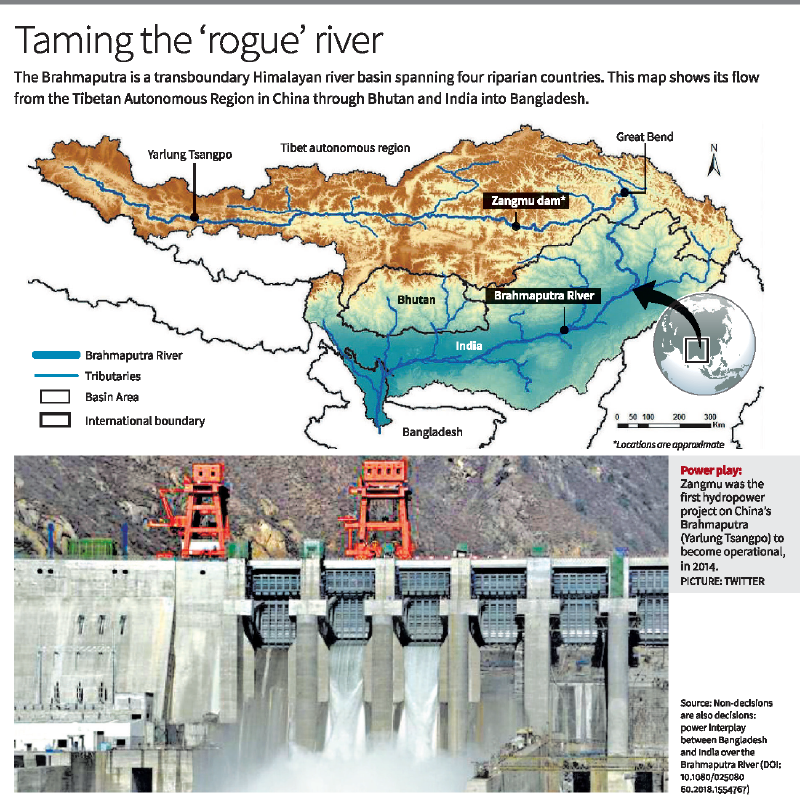
- 07 Jan 2025
Introduction:
China has approved the construction of the Yarlung Tsangpo hydropower project, the world's largest hydropower project, with a capacity of 60,000 MW, on the Brahmaputra River in Tibet. This mega-dam, located at the Great Bend in Medog county, has significant geopolitical, environmental, and socio-economic implications for India, Bhutan, and Bangladesh, the downstream riparian countries.
Geographical and Geopolitical Context:
- The Brahmaputra is a transboundary river system flowing through China, India, Bhutan, and Bangladesh.
- China, located at the river’s source in Tibet, is the uppermost riparian nation, controlling water flow into India and Bangladesh.
- All riparian countries, including China, India, Bhutan, and Bangladesh, have proposed major water infrastructure projects in the river basin, which has become a site for geopolitical rivalry, with mega-dams symbolizing sovereignty.
China’s Hydropower Ambitions:
- The Yarlung Tsangpo project is part of China’s 14th Five-Year Plan (2021-2025) and aims to address the country's energy needs while moving towards net carbon neutrality by 2060.
- The river's steep descent from Tibet provides an ideal location for hydroelectricity generation.
- China’s previous mega-projects, like the Three Gorges Dam, highlight the scale of these ambitions but also raise concerns about environmental and social consequences, including ecosystem disruption, displacement, and seismic risks.
Impact on Downstream Communities:
- Water Flow and Agriculture: China’s mega-dam may significantly alter water flow to India, particularly affecting agriculture and water availability in the northeastern regions. India, reliant on the Brahmaputra for irrigation and drinking water, could face disruptions.
- Silt and Biodiversity: The blocking of silt essential for agriculture could degrade soil quality and damage biodiversity in the river basin.
- Seismic Risks: The region’s seismic activity, coupled with the construction of large dams, heightens the risk of catastrophic events such as landslides and Glacial Lake Outburst Floods (GLOFs), which have previously caused devastation in the Himalayas.
Hydropower Competition Between China and India:
- Both China and India are competing to harness the Brahmaputra's potential for hydropower, with India planning its own large project at Upper Siang.
- Bhutan has also proposed several medium-sized dams, raising concerns in downstream countries about cumulative impacts.
- No comprehensive bilateral treaty exists between India and China to regulate shared transboundary rivers, though they have mechanisms for data sharing and discussions on river issues.
Environmental and Regional Concerns:
- The Brahmaputra river basin is an ecologically sensitive region. The construction of large dams threatens the fragile ecosystem, including agro-pastoral communities, biodiversity, and wetlands.
- Tibet’s river systems are vital for the global cryosphere, affecting climate systems, including monsoon patterns. Disruption to these systems could have broader implications for regional and global climate stability.
Challenges in Bilateral Cooperation:
- India and China have struggled with effective coordination on river management. China has shown reluctance to share critical hydrological data, a concern amplified by the lack of a binding agreement.
- The ongoing geopolitical tensions between the two countries, particularly over the border dispute, further complicate cooperation on transboundary water issues.
Recommendations for India:
- Enhanced Cooperation: India should push for renewed agreements and mechanisms for real-time data exchange with China to prevent ecological and socio-economic damage.
- Public Challenges: India needs to challenge China’s claims that its hydropower projects will have minimal downstream impact, ensuring that India's concerns are addressed in international forums.
- Diplomatic Engagement: Water issues should be prioritized in India’s diplomatic engagement with China, emphasizing the importance of transparency and cooperation to ensure mutual benefit and regional stability.
Conclusion:
The Yarlung Tsangpo mega-dam project poses significant risks to the entire Brahmaputra river basin. A collaborative approach, involving transparent dialogue and cooperation among riparian countries, is essential to mitigate the potential adverse impacts on downstream communities and the fragile Himalayan ecosystem.
Caste-Based Discrimination in Prisons

- 02 Jan 2025
In News:
The Union Ministry of Home Affairs has recently introduced significant revisions to the Model Prison Manual, 2016, and the Model Prisons and Correctional Services Act, 2023. These changes aim to eliminate caste-based discrimination in Indian prisons and establish a standardized approach to defining and treating habitual offenders across the country.
Background
In October 2024, the Supreme Court of India expressed concerns over the persistence of caste-based discrimination within prisons and the lack of consistency in how habitual offenders are classified. In response, the Court instructed the government to amend prison regulations to promote equality and fairness. The newly introduced reforms are in line with the Court's directives and focus on aligning prison practices with constitutional principles.
Addressing Caste-Based Discrimination in Prisons
The recent amendments take specific steps to combat caste-based discrimination within correctional facilities:
- Ban on Discrimination: Prison authorities are now mandated to ensure there is no caste-based segregation or bias. All work assignments and duties will be distributed impartially among inmates.
- Legal Provision Against Discrimination: A new clause, Section 55(A), titled "Prohibition of Caste-Based Discrimination in Prisons and Correctional Institutions", has been added to the Model Act, establishing a formal legal framework to address caste discrimination.
- Manual Scavenging Ban: The amendments extend the provisions of the Prohibition of Employment as Manual Scavengers and their Rehabilitation Act, 2013 to include prisons, prohibiting the degrading practice of manual scavenging or any hazardous cleaning within correctional facilities.
Redefining Habitual Offenders
The updated amendments also standardize the classification and treatment of habitual offenders, in accordance with the Supreme Court’s directions:
- Uniform Definition: A habitual offender is now officially defined as an individual convicted and sentenced to imprisonment for two or more separate offences within a continuous five-year period, provided the sentences were not overturned on appeal or review. Importantly, time spent in jail under sentence is excluded from this five-year period.
- National Consistency: States that do not have specific Habitual Offender Acts must amend their laws within three months to ensure consistency with the new national framework.
Importance of the Reforms
- Promoting Equality: These amendments seek to uphold the constitutional rights of prisoners, ensuring that all individuals, regardless of caste or background, are treated equally and with dignity.
- Eliminating Degrading Practices: The extension of the manual scavenging prohibition to prisons is a vital step in eliminating degrading and inhumane practices, ensuring a more humane environment for prisoners.
- Uniform Framework: The establishment of a standardized definition of habitual offenders ensures a consistent approach in handling repeat offenders across all states, reducing the possibility of arbitrary classifications.
Conclusion
The reforms introduced by the Union Home Ministry mark a significant milestone in India’s prison reform journey. By addressing caste-based discrimination and standardizing the classification of habitual offenders, these amendments reaffirm the country’s commitment to human rights and the rule of law. These changes not only improve the conditions within prisons but also set the stage for future reforms aimed at creating a fairer and more equitable correctional system.
Free Movement Regime
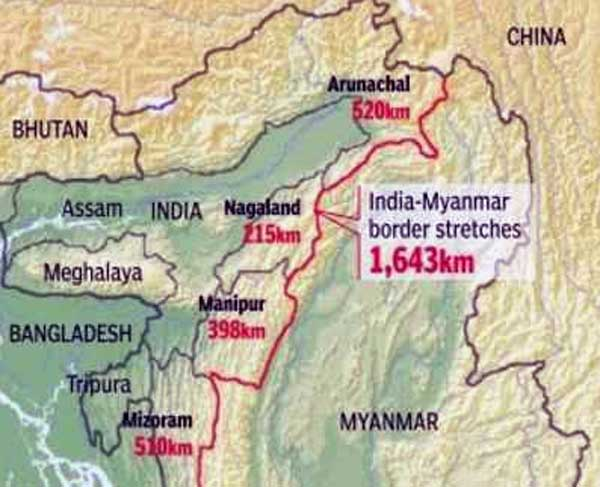
- 27 Dec 2024
In News:
The Indian government, through the Ministry of Home Affairs (MHA), has recently issued new guidelines to regulate the movement of people between India and Myanmar, especially along the border regions. These guidelines come after the suspension of the Free Movement Regime (FMR), which had previously allowed residents within a specified range of the border to move freely. The new protocol aims to enhance internal security and address concerns related to demographic shifts in India's northeastern states.
Background of the Free Movement Regime (FMR)
What is FMR?
The Free Movement Regime (FMR) is a bilateral arrangement between India and Myanmar that permits residents living in border areas to cross the international boundary without a visa. This agreement was established in 1968 to facilitate familial, cultural, and economic exchanges between people living on either side of the border.
Territorial Limits and Evolution
Initially, the FMR allowed free movement within a 40 km radius from the border. However, in 2004, this limit was reduced to 16 km, and additional regulations were introduced in 2016. The most recent development sees the limit further reduced to 10 km, with stricter regulations implemented to regulate the movement.
Recent Developments and New Guidelines
Suspension of FMR
In February 2023, Union Home Minister Amit Shah announced the suspension of the FMR along the India-Myanmar border, citing concerns about internal security and demographic changes, particularly in India's northeastern states. This decision came in the context of growing ethnic violence and political pressures, especially from states like Manipur.
Despite the announcement, the formal scrapping of the FMR is yet to be officially notified by the Ministry of External Affairs (MEA). However, the MHA has issued new guidelines to regulate cross-border movement, focusing on enhancing security without completely discontinuing the regime.
Key Features of the New Guidelines
The updated protocols issued by the MHA include several measures aimed at improving the security and regulation of movement across the border:
- Reduced Movement Limit: The new guidelines reduce the free movement limit from 16 km to 10 km from the border on both sides.
- Border Pass System: Residents wishing to cross into Myanmar or return to India must obtain a "border pass" from the Assam Rifles. This pass allows a stay of up to seven days in the neighboring country.
- Document and Health Checks: Upon entry into India, individuals will undergo a document inspection by the Assam Rifles, followed by security and health checks conducted by state police and health authorities. Biometrics and photographs will be collected, and a QR code-enabled border pass will be issued for verification.
- Designated Entry Points: There will be 43 designated entry and exit points across the border, with biometric verification and health screening required at all points.
- Monitoring and Enforcement: The Assam Rifles will oversee the movement, ensuring that individuals comply with the new regulations. Violations of the movement protocol will result in legal action.
Infrastructure and Technology Implementation
The government plans to establish infrastructure, such as biometric machines and software for border pass issuance. Pilot entry and exit points will be operational soon, with a phased implementation for the remaining points.
Political Reactions and Opposition
Regional Concerns and Opposition
The suspension of the FMR has been a contentious issue in India's northeastern states. The governments of Nagaland and Mizoram have raised objections to the scrapping of the regime, citing the cultural and familial ties of border communities. The Nagaland Assembly passed a resolution opposing the government's decision, while political leaders in Manipur argued that the unregulated movement of people had contributed to ethnic violence in the region.
Specific Concerns in Manipur
The chief minister of Manipur, N. Biren Singh, attributed ongoing ethnic conflicts in the state to the unchecked movement of people across the border. This was particularly evident in the violent ethnic clashes that broke out in 2023. As a result, Singh urged the Home Ministry to cancel the FMR along the India-Myanmar border, and the new guidelines reflect the state's concerns.
Conclusion
The suspension of the Free Movement Regime along the India-Myanmar border, followed by the introduction of stricter guidelines, marks a significant shift in India's border management policy. While the formal scrapping of FMR is yet to occur, the new protocols aim to balance security concerns with the region's long-standing cultural ties. The implementation of biometric checks and designated entry points signifies the government’s focus on modernizing border control while addressing regional concerns. The outcome of this policy shift will have important implications for internal security, demographic dynamics, and bilateral relations between India and Myanmar.
Revitalization of India-China Relations: A Diplomatic Turning Point
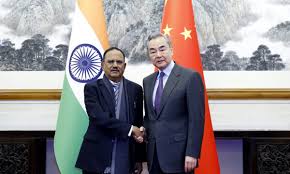
- 23 Dec 2024
In News:
The 23rd meeting between India’s National Security Adviser (NSA) and China’s Foreign Minister, held as Special Representatives (SRs), marks a pivotal moment in the complex bilateral relationship between the two nations. This dialogue, which follows years of strain exacerbated by the 2020 Galwan Valley clash, signals a renewed commitment to restoring stability and fostering peace along the border.
Special Representatives Mechanism: A Foundation for Dialogue
The SR mechanism, established in the early 2000s, has long served as a key platform for addressing bilateral disputes, particularly the contentious boundary issue. Past rounds of discussions have facilitated troop disengagement and efforts to maintain peace along the Line of Actual Control (LAC). The recent meeting, following the 2023 BRICS summit discussions between Prime Minister Narendra Modi and Chinese President Xi Jinping, demonstrates a positive step towards de-escalation, with the resumption of talks providing hope for progress.
Key Outcomes of the 23rd SR Meeting
Several significant developments emerged from the meeting, focusing on cultural, economic, and strategic cooperation:
- Cultural and Economic Cooperation:
- Kailash-Mansarovar Yatra: The resumption of this religious pilgrimage represents a significant cultural exchange, fostering people-to-people ties.
- Border Trade Revival: Border trade in Sikkim has been reestablished, potentially revitalizing local economies and improving trade relations.
- Scientific and Environmental Cooperation:
- Trans-boundary River Data Sharing: China’s commitment to sharing crucial river data with India will aid in flood management, directly addressing India’s long-standing concerns over water security, particularly in light of China's upstream dam projects.
- Connectivity and Exchange Programs:
- Discussions on restarting direct flights and visa easements for students and businesses, along with enhanced journalist exchanges, signal a move toward greater normalization of relations.
- Commitment to Border Peace:
- Both sides have reiterated their intent to maintain peace along the border, a critical factor in reducing tensions. While China expressed a six-point consensus, India has cautiously framed the outcome as “positive directions,” reflecting a reserved optimism.
Challenges in India-China Relations
Despite the positive momentum, numerous challenges persist in the bilateral relationship:
- Boundary Dispute:
- The core irritant remains the unresolved border issue, with divergent perceptions of the LAC. While some disengagement has occurred, full de-escalation and demilitarization across the entire border have not yet been achieved.
- Trust Deficit:
- The 2020 Galwan clash has left a lasting scar on mutual trust. Additionally, China’s aggressive patrolling and policy shifts continue to raise concerns in India, necessitating vigilance in future negotiations.
- Economic Imbalances:
- India’s trade relationship with China remains lopsided, with a significant trade deficit. Moreover, China’s growing influence in India’s neighborhood, particularly in Pakistan, Nepal, and Sri Lanka, challenges India’s strategic interests.
- Global Power Dynamics:
- India’s evolving alliances, particularly with the U.S., QUAD, and I2U2 group, alongside China’s assertive stance in Taiwan and the South China Sea, complicate bilateral relations and influence global perceptions.
The Way Forward
To navigate the challenges and harness opportunities, India must adopt a balanced approach, combining diplomatic engagement, economic resilience, and strategic vigilance:
- Confidence-Building Measures:
- Continued disengagement and de-escalation at the LAC, coupled with increased transparency in military activities, will be critical to maintaining peace.
- Broadening Cooperation:
- Exploring areas of mutual interest, such as climate change, public health, and infrastructure development, could foster deeper cooperation and help transcend contentious issues.
- Economic Realignment:
- India must address its trade deficit by pushing for greater market access for Indian products in China. Additionally, diversifying supply chains and promoting joint ventures in renewable energy and technology can reduce dependency.
- Multilateral Engagement:
- Engaging through global forums like BRICS, SCO, and G20, and strengthening regional alliances, will help mitigate tensions and counterbalance China's regional influence.
- Strategic Vigilance:
- Strengthening ties with regional allies, particularly in the Indo-Pacific, and enhancing military preparedness will safeguard India’s strategic interests in the face of China’s assertiveness.
Conclusion
The recent meeting between India and China represents a cautious but constructive step toward stabilizing their fraught relationship. By focusing on diplomacy, strengthening economic ties, and maintaining strategic vigilance, India can navigate its complex relationship with China in a rapidly shifting global context. A careful balance of engagement and vigilance will be crucial for India’s future dealings with its powerful neighbor.
Supreme Court Directs Policy for Sacred Groves Protection
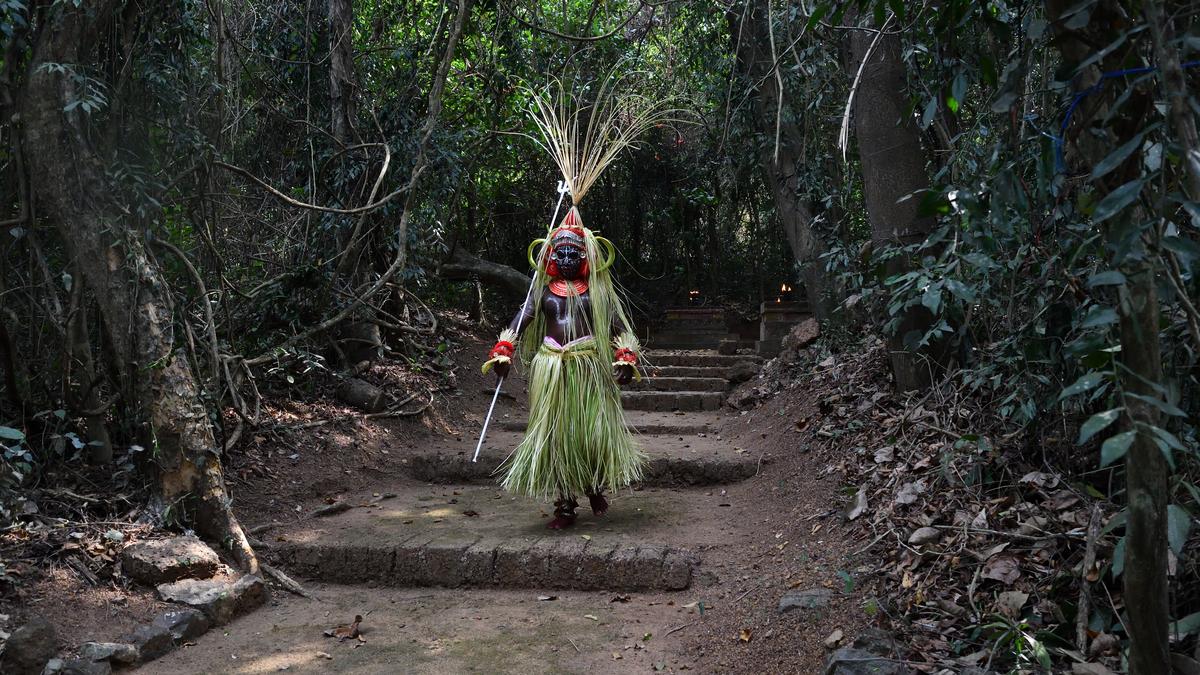
- 20 Dec 2024
In News:
Recently, the Supreme Court of India issued a significant judgment directing the Union Government to formulate a comprehensive policy for the protection and management of sacred groves across the country. These natural spaces, traditionally safeguarded by local communities, play a crucial role in preserving both ecological diversity and cultural heritage.
What are Sacred Groves?
Sacred Groves are patches of virgin forests that are protected by local communities due to their religious and cultural significance. They represent remnants of what were once dominant ecosystems and serve as key habitats for flora and fauna. Typically, sacred groves are not just ecological reserves, but also form an integral part of local traditions, often protected due to spiritual beliefs.
Key Features of Sacred Groves:
- Ecological Value: Sacred groves contribute significantly to biodiversity conservation.
- Cultural Significance: These groves are revered in various religious practices and are central to local traditions.
- Geographical Presence: Sacred groves are found in regions like Tamil Nadu, Kerala, Karnataka, Maharashtra, and parts of Rajasthan.
Supreme Court's Directive
The court's judgment was based on a plea highlighting the decline of sacred groves in Rajasthan, particularly those being lost due to deforestation and illegal land-use changes. While the Wildlife (Protection) Act of 1972 empowers state governments to declare community lands as reserves, the court recognized the need for a unified national policy to protect sacred groves as cultural reserves.
Recommendations:
- Nationwide Survey: The Ministry of Environment, Forest, and Climate Change (MoEF&CC) was instructed to conduct a nationwide survey to map and assess sacred groves, identifying their size and extent.
- Legal Protection: Sacred groves should be recognized as community reserves and protected under the Wildlife (Protection) Act, 1972.
- State-Specific Measures: The Rajasthan government was specifically directed to carry out detailed mapping (both on-ground and satellite) of sacred groves within the state, ensuring that the groves are recognized for their ecological and cultural significance.
The Role of Sacred Groves in Conservation
Sacred groves play a pivotal role in the conservation of biodiversity. They serve as refuges for various plant and animal species, and the traditional practices associated with these groves, such as tree worship, discourage destructive activities like logging and hunting.
Ecological and Cultural Importance:
- Sacred groves often act as critical biodiversity hotspots, preserving rare and indigenous species.
- They help maintain clean water ecosystems and act as carbon sinks, contributing to climate mitigation.
- Practices of non-interference with these areas have allowed flora and fauna to thrive over centuries.
Cultural Significance Across India
The importance of sacred groves is deeply embedded in India's diverse cultural heritage. They are considered the abode of deities, and various regions have unique names and rituals associated with these groves.
Examples of Sacred Groves in India:
- Himachal Pradesh: Devban
- Karnataka: Devarakadu
- Kerala: Kavu
- Rajasthan: Oran
- Maharashtra: Devrai
Piplantri Village Model
A key example highlighted in the judgment was the Piplantri village in Rajasthan, where the community undertook a remarkable transformation of barren land into flourishing groves. The initiative, driven by local leadership, involves planting 111 trees for every girl child born, which has led to several environmental and social benefits.
Impact of Piplantri's Community Efforts:
- Over 40 lakh trees have been planted, which has recharged the water table by 800-900 feet and lowered the local climate by 3-4°C.
- The initiative has contributed to the reduction of female foeticide and empowered women's self-help groups.
- The village now enjoys economic growth, better education opportunities, and increased local income.
Legal and Statutory Framework
Sacred groves are already recognized under existing Indian laws, notably the Wildlife (Protection) Act, 1972, which allows states to declare sacred groves as community reserves. Additionally, the National Forest Policy of 1988 encourages the involvement of local communities in the conservation of forest areas, a principle supported by the Godavarman Case of 1996.
Key Legal Provisions:
- Wildlife (Protection) Act, 1972: Empowers state governments to declare sacred groves as community reserves.
- National Forest Policy, 1988: Encourages community involvement in the conservation and protection of forests, including sacred groves.
- Scheduled Tribes and Other Traditional Forest Dwellers (Recognition of Forest Rights) Act, 2006: Suggests empowering traditional communities as custodians of sacred groves.
Looking Ahead: The Need for Action
The Supreme Court has scheduled further hearings to assess the progress of the survey and mapping efforts by Rajasthan. The court also stressed the importance of empowering traditional communities to continue their role as custodians of sacred groves, ensuring their sustainable protection for future generations.
By recognizing the ecological and cultural significance of sacred groves and encouraging community-driven conservation efforts, the Supreme Court’s ruling sets a precedent for more inclusive environmental policies in India. This could also inspire similar initiatives in other parts of the world, promoting the protection of sacred natural spaces for their critical role in maintaining biodiversity and fostering sustainable communities.
Commitment to Eradicating Naxalism in Chhattisgarh by 2026
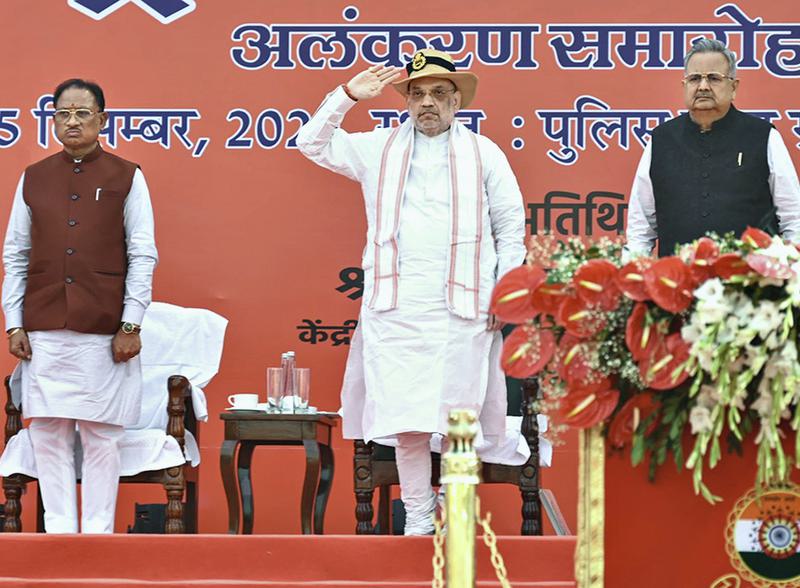
- 17 Dec 2024
Overview
Union Home Minister Amit Shah has reiterated India's commitment to eliminate Naxalism in Chhattisgarh by March 31, 2026. He emphasized the progress made in the fight against Naxalism, highlighting key successes and outlining the strategy for the coming years.
Key Pointers
- Government Commitment: Amit Shah emphasized the joint commitment of the Government of India and the Chhattisgarh state leadership to rid the state of Naxalism by 2026.
- Security Forces’ Success: Over the past year, Chhattisgarh police neutralized 287 Naxalites, arrested around 1,000, and saw 837 surrenders.
- Top Naxal Cadres Neutralized: The state forces successfully neutralized 14 high-ranking Naxal cadres.
- President’s Police Colour Award: Chhattisgarh Police received the President's insignia within 25 years, a significant achievement for the state.
The Three-Pronged Strategy for Eliminating Maoist Insurgency
- Security Measures (Force)
Deployment of Security Forces
- Enhanced Presence: Increased deployment of Central and State police forces in Left-Wing Extremism (LWE) areas.
- Joint Operations: Coordinated operations between state and central forces, including CRPF and COBRA units.
- Upgraded Technology: Incorporation of UAVs, solar lights, and mobile towers to enhance operational efficiency.
Operation SAMADHAN
- Key Elements:
- Smart Leadership: Leading with innovative strategies.
- Aggressive Strategy: Swift, decisive action against insurgents.
- Motivation and Training: Strengthening the capabilities of forces.
- Actionable Intelligence: Real-time intelligence for effective operations.
- Harnessing Technology: Using modern tech for strategic advantage.
2. Development Initiatives
Focused Development Schemes
- PMGSY: Rural road connectivity under the Pradhan Mantri Gram Sadak Yojana.
- Aspirational Districts Program: Improving infrastructure in Naxal-affected areas.
- Skill Development: Targeted schemes in 47 LWE-affected districts to reduce unemployment.
Infrastructure Development
- Special Infrastructure Schemes: Building schools, roads, and bridges in remote areas to integrate them into the mainstream economy.
- Rehabilitation: Focus on providing rehabilitation for former Naxals through education and vocational training.
3. Empowerment (Winning Hearts and Minds)
Public Engagement
- Tribal Empowerment: Strengthening communication with tribal communities to reduce alienation and mistrust.
- Rehabilitation Policies: Surrender schemes offering incentives like education and financial aid to reintegrate former insurgents into society.
Maoism: Ideology and Background
What is Maoism?
- Origin: A form of communism developed by Mao Tse Tung, focusing on armed insurgency to capture state power.
- Core Beliefs: Maoists believe in violence and insurrection as legitimate means to overthrow the state and establish a People’s Democratic Republic.
- Indian Maoism: The Communist Party of India (Maoist), formed in 2004, leads the largest Maoist insurgency in India.
Recent Achievements in Combatting Maoist Insurgency
Key Successes in 2023
- Maoist-Free Villages: Villages in Dantewada declared "Maoist-free," a significant victory for the state.
- Reduction in Security Forces’ Casualties: 14 deaths in 2024, a dramatic decrease from 198 deaths in 2007.
- Infrastructure and Logistical Support: Enhanced use of helicopters and fortified police stations.
Government’s Commitment to Rebuilding
- Rehabilitation and Welfare: The government is implementing policies to improve the living standards of affected families, including 15,000 houses for Naxal-affected regions.
- Economic Development: Focus on building infrastructure and providing employment through skills training programs.
Challenges in Eliminating Naxalism
Socio-Economic Issues
- Exploitation of Tribals: Marginalization of tribals due to displacement for mining and forestry.
- Lack of Infrastructure: Basic amenities like roads, schools, and healthcare are absent in many areas.
- Centralized Naxal Command: The CPI (Maoist) retains a strong leadership, despite fragmentation of its forces.
Governance and Trust Issues
- Alienation of Local Populations: Ineffective governance and poor implementation of welfare schemes fuel local support for Naxal groups.
- Resource Conflict: The Naxals exploit rich mineral resources in the region to fund their insurgency.
Way Forward
Governance and Economic Reforms
- Tribal Empowerment: Form Tribal Advisory Councils as per the Fifth Schedule for better resource management.
- Land Redistribution: Enforce the Land Ceiling Act to reduce inequality.
- Livelihood Programs: Offer alternative livelihoods to reduce dependency on illegal activities.
Security Measures
- Paramilitary Deployment: Specialized forces to secure tribal areas and enable local governance.
- Resource Management: Ensure sustainable exploitation of natural resources, involving tribal communities in the decision-making process.
Peace Dialogues
- Inclusive Policies: Engage in dialogue with Naxals to facilitate their reintegration into mainstream society.
Conclusion
Naxalism in India, particularly in Chhattisgarh, is a complex issue rooted in socio-economic inequalities, lack of development, and historical alienation of tribal communities. The government's approach, encapsulated in the SAMADHAN strategy, combines security operations with developmental initiatives and a focus on empowerment to tackle the problem. With a clear commitment to eliminate Naxalism by 2026, the Indian government is making significant strides in reducing violence, improving governance, and integrating affected communities into the mainstream.
How would a carbon market function?

- 16 Dec 2024
In News:
COP29, the ongoing climate conference in Azerbaijan’s capital Baku, has given a fillip to the idea of using carbon markets to curb carbon emissions by approving standards that can help in the setting up of an international carbon market as soon as the coming year.
Introduction to Carbon Markets
- Carbon markets allow the buying and selling of the right to emit carbon dioxide (CO2) into the atmosphere.
- Governments issue certificates known as carbon credits, each representing the right to emit 1,000 kilograms of CO2.
- The total number of credits issued is capped to control carbon emissions. Companies and individuals who don’t have credits cannot emit CO2.
Trading of Carbon Credits
- Carbon Credit Trading: Companies holding more carbon credits than needed can sell them to others who need more, with the price determined by market forces.
- Carbon Offsets: Businesses can also purchase carbon offsets, often provided by environmental NGOs, which promise to reduce emissions (e.g., by planting trees). These offsets counterbalance the firm’s carbon emissions.
- The trading of both credits and offsets is designed to create financial incentives for companies to reduce their carbon footprint.
Advantages of Carbon Markets
- Addressing Externalities: Carbon emissions are a classic example of an economic externality, where the costs of pollution are not reflected in market prices.
- Market Efficiency: By allowing firms to buy and sell carbon credits, the system internalizes the cost of carbon emissions, encouraging businesses to reduce emissions to avoid higher costs.
- Incentive for Emission Reduction: Carbon markets aim to create a financial reason for companies to lower their emissions, thus helping mitigate climate change.
Voluntary vs. Government-Mandated Carbon Markets
- Voluntary Carbon Reporting: Many corporations prefer voluntary systems like the Carbon Disclosure Project (CDP) for reporting their emissions, fearing government-imposed restrictions.
- Market Flexibility: Corporations like ExxonMobil and General Motors argue that carbon markets with freely traded credits allocate carbon allowances more efficiently than government-imposed limits. This allows firms to purchase credits from others, optimizing resource allocation without restricting output.
- Corporate Resistance to Government Intervention: Firms are often reluctant to accept strict government budgets for carbon emissions, fearing increased operational costs and production limitations due to diverse supply chains.
Issues and Criticisms of Carbon Markets
- Government Manipulation of Credit Supply: Governments may increase the number of carbon credits issued, leading to lower prices and reduced incentives for emission reductions.
- Lack of Accountability in Carbon Offsets: Critics argue that some companies buy carbon offsets as a form of virtue signalling, without genuine concern for their environmental impact. This undermines the effectiveness of the offsets.
- Government Mismanagement: Political decision-making may lead to the over-restriction of carbon credits, potentially slowing economic growth by limiting available emissions allowances. The ability of governments to accurately determine the optimal supply of carbon credits is a contentious issue.
The Concept of Carbon Credits and Their History
- Introduction of Carbon Credits: Carbon credits were first introduced in the 1990s in the U.S., specifically through a cap-and-trade model designed to control sulfur dioxide emissions. This approach later expanded to include carbon emissions.
- Role of Carbon Markets: In essence, these markets aim to create a financial mechanism where firms can trade the right to pollute, ensuring a balance between economic growth and environmental protection.
Criticism of Carbon Offsets
- Effectiveness of Offsets: Experts are critical of carbon offsets, arguing that they do not always lead to meaningful reductions in emissions. For example, some companies may purchase offsets without ensuring that the projects are genuinely offsetting their emissions.
- Moral Hazard: Critics suggest that offset programs may lead to firms simply paying for the right to pollute, rather than actually reducing emissions in their operations.
Conclusion
- Carbon Markets as a Tool for Emission Reduction: Despite the criticisms, carbon markets remain a promising tool for mitigating climate change, provided they are carefully regulated and implemented.
- The Future of Carbon Trading: As discussions at COP29 evolve, the development of international standards for carbon trading could potentially enhance the effectiveness of these markets, offering a viable path to global emission reductions.
Mission Mausam

- 20 Oct 2024
Introduction: The Need for Advanced Weather Forecasting
India is increasingly facing extreme weather events such as flooding and droughts, which have become more frequent and intense in recent years. According to a 2021 study by the Council on Energy, Environment, and Water (CEEW), 40% of districts in India face alternating climatic hazards, where flood-prone areas also experience droughts, and vice versa. Moreover, a 64% increase in heavy rainfall days during the monsoon season has been recorded over the last decade.
Despite these challenges, India’s weather forecasting systems remain underdeveloped, particularly in flood-prone regions. While cyclone-prone areas benefit from comprehensive early warning systems, flood-prone regions are largely under-covered. To address these gaps and to prepare for more frequent climate risks, the Mission Mausam, launched in September 2024, aims to transform India's weather forecasting capabilities.
Key Objectives of Mission Mausam
Mission Mausam focuses on three main pillars:
- Increasing Weather Observation Networks
- Improving Weather Forecasting Models
- Investigating Weather Modification Techniques
This initiative is led by three institutions under the Ministry of Earth Sciences:
- India Meteorological Department (IMD)
- National Centre for Medium Range Weather Forecasting (NCMRWF)
- Indian Institute of Tropical Meteorology (IITM)
The mission is backed by an investment of ?2,000 crore and aims to address the growing complexity of India’s climate challenges.
1. Gaps in India's Current Weather Observation Network
Despite significant advances, India’s existing weather observation system has several gaps, particularly in terms of coverage and data accessibility.
Weather Radar Coverage
India currently operates 39 Doppler Weather Radars (DWRs), but their distribution is not optimal. Key regions that are highly vulnerable to extreme weather events are under-monitored:
- Western Coast: Only 5 radars monitor the entire western coastline, where cyclones are becoming more frequent and intense.
- Urban Centres: Cities like Ahmedabad, Bengaluru, and Jodhpur — which have experienced repeated flooding — lack adequate radar coverage.
Action Required:
- Expand Radar Coverage: Prioritise the installation of weather radars along the western coast and in urban centres with high climate risks.
- Improve Observation Platforms: In addition to radars, install other weather observation platforms such as wind profilers and radiometers to provide more comprehensive data.
Limited Data Access
At present, the data from India’s weather observation network is not fully accessible to researchers and innovators. This limits the ability to develop localised early warning systems and innovative solutions for climate resilience.
Action Required:
- Open Data Access: Make weather data available to researchers, academic institutions, and private sector innovators. This will encourage the development of analytical tools and localized solutions for extreme weather events.
- Global Best Practices: Following the examples of countries like the United States, United Kingdom, and France, which openly share weather data, India can foster innovation and improve its forecasting capabilities.
2. Strengthening Weather Forecasting Models
Improved weather forecasting models are essential for accurately predicting extreme weather events, including heavy rainfall, floods, and cyclones.
Machine Learning and Atmospheric Physics
Mission Mausam will enhance weather forecasting models through:
- Integration of Machine Learning: By incorporating machine learning techniques, India can improve prediction accuracy and lead times.
- Better Understanding of Atmospheric Physics: Improved scientific understanding of the atmosphere can lead to more accurate and reliable weather forecasts.
Action Required:
- Enhance Forecasting Capabilities: Focus on improving long-term and short-term weather predictions, especially for regions prone to extreme weather.
- Incorporate Technology: Leverage advanced technologies, including AI and machine learning, to predict weather patterns more accurately.
3. Improving Communication and Dissemination of Weather Information
Effective communication of weather warnings is essential for timely action by governments, businesses, and citizens.
Enhancing Warning Systems
Currently, the India Meteorological Department (IMD) disseminates weather warnings through various channels, including mobile applications and web portals. However, the effectiveness of these warnings can be improved.
Action Required:
- User-Friendly Warnings: Improve the interface of weather apps and websites, providing users with guidance on how to interpret warnings and take necessary precautions.
- Capacity Building: Create informational videos, media campaigns, and easy-to-understand guides to help citizens act upon warnings effectively.
Wider Use of Localised Decision Tools
Localized decision tools can be used to help communities in specific regions take proactive steps before, during, and after extreme weather events.
Action Required:
- Localized Early Warning Systems: Develop region-specific warning tools that integrate local knowledge with scientific forecasts, making them more effective for local populations.
4. Integrating Mission Mausam with Sectoral Planning
The success of Mission Mausam will depend on its integration with various sectoral policies, particularly in areas such as agriculture, water management, and energy.
Use Cases for Climate-Resilient Sectors
Data from the enhanced weather observation system can be used to:
- Support Agriculture: Weather forecasts can inform crop planning and irrigation management, helping farmers mitigate the impacts of extreme weather events.
- Water Resource Management: Improved forecasting can assist in flood management, water storage, and distribution planning.
- Energy Sector Planning: Accurate weather predictions can help the energy sector plan for weather-related disruptions, such as extreme temperatures or storms that affect power grids.
Action Required:
- Sectoral Integration: Ensure that the weather data generated by Mission Mausam is shared with relevant ministries (e.g., Agriculture, Water Resources, Energy) to develop climate-resilient policies and strategies.
Conclusion: Moving Towards a Climate-Smart India
Mission Mausam is a critical initiative to make India more weather-ready and climate-smart. By improving weather observation networks, enhancing forecasting models, and promoting data-sharing, India can mitigate the impacts of extreme weather events that have become increasingly unpredictable and severe. The success of Mission Mausam will depend on:
- Investing in technology
- Expanding weather coverage
- Engaging local communities and sectors
As India continues to face the challenges posed by climate change, Mission Mausam holds the potential to revolutionize how the country prepares for and responds to extreme weather events, ultimately reducing the toll on lives and livelihoods.
National Urban Livelihood Mission (NULM)
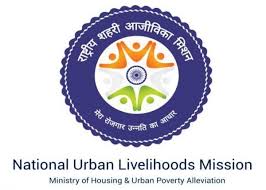
- 05 Oct 2024
In News:
The Government is set to launch NULM 2.0, the latest iteration of the National Urban Livelihood Mission (NULM), aimed at enhancing the livelihoods of urban poor and vulnerable populations. This version will specifically target six key groups: construction workers, gig workers, waste management workers, care workers, domestic workers, and transportation workers.
Overview of DAY-NULM
The Deendayal Antyodaya Yojana-National Urban Livelihoods Mission (DAY-NULM) was initiated in 2014 by the Ministry of Housing and Urban Affairs to replace the Swarna Jayanti Shahari Rozgar Yojana. It aims to uplift urban poor through organized self-help groups (SHGs), skill development, and access to credit.
Key Features:
- Funding Structure: DAY-NULM operates as a Centrally Sponsored Scheme, with a funding ratio of 75:25 between the central and state governments, adjusted to 90:10 for North Eastern and Special Category states.
- Mobilization of Women: The mission has successfully formed over 831,000 SHGs, mobilizing more than 8.4 million urban poor women by 2023.
- Objectives: It focuses on sustainable livelihoods through skill development, financial access, and entrepreneurship, particularly for women.
Components and Achievements
DAY-NULM includes various initiatives such as:
- Skill training programs.
- Support for self-employment.
- Rehabilitation for street vendors.
Performance Highlights:
- Over 89.33 lakh women have joined SHGs, with 6.12 lakh receiving initial funds.
- Approximately 15 lakh individuals have undergone skill training, leading to employment for 8.20 lakh.
- Surveys have identified 53.76 lakh street vendors, resulting in significant documentation and support.
Introduction of NULM 2.0
NULM 2.0 is a revamped initiative designed to further support urban livelihoods through financial aid and infrastructure enhancements.
Key Features:
- Microcredit Access: Eligible individuals can obtain microcredit of up to ?4 lakh, while groups can access up to ?20 lakh, with a subsidized interest rate of 5%.
- Support for Enterprises: The funding aims to assist beneficiaries in starting small businesses, creating social infrastructure, and providing grants for innovative projects, such as sanitation machinery.
Pilot Initiative
To effectively implement NULM 2.0, the government will conduct a pilot program in 25 cities. This will focus on:
- Identifying urban poor populations.
- Ensuring targeted assistance to improve beneficiaries’ earnings and living conditions.
Conclusion
The rollout of NULM 2.0 represents a significant step in addressing the needs of the urban poor, with a comprehensive framework designed to provide financial support and improve livelihoods. By focusing on critical worker groups and leveraging microcredit, the initiative aims to foster sustainable development and enhance the quality of life for urban vulnerable communities.
What is the Unified Lending Interface by the RBI?
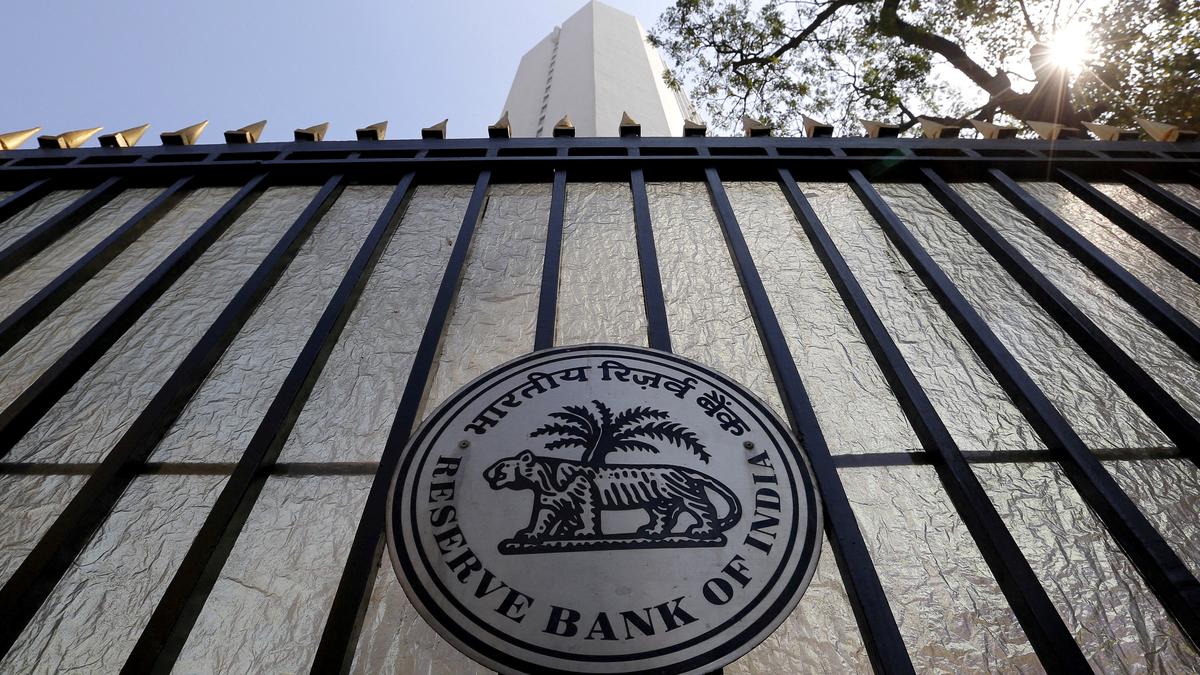
- 03 Sep 2024
In News:
The Reserve Bank of India (RBI), as part of its strategy to create digital public infrastructure in the country, has announced that a new technology platform called the Unified Lending Interface (ULI) would be introduced by the Reserve Bank Innovation Hub, Bengaluru which will enable friction-less credit to farmers and MSME borrowers to begin with.
What is ULI?
The ULI platform, aims to revolutionize the credit underwriting process by enabling a streamlined and consent-based transfer of both financial and non-financial data from various sources to lenders.
- Seamless Data Flow: ULI facilitates an efficient flow of digitized data, including crucial records like land titles, directly to lenders, enhancing the credit appraisal process.
- Faster Credit Appraisal: The platform is particularly beneficial for smaller and rural borrowers who may lack extensive credit histories, significantly reducing the time required for credit assessments.
- Standardized APIs: ULI employs common, standardized Application Programming Interfaces (APIs) that allow for a plug-and-play integration, simplifying the technical requirements for lenders and ensuring easy access to diverse data sources.
- Access to Diverse Data: Lenders can access a wealth of information from various databases, including government records and satellite imagery, which can provide deeper insights into potential borrowers.
- Opportunities for FinTechs: The platform also opens up opportunities for FinTech companies by connecting them with multiple lenders, thereby enhancing their ability to deliver tailored financial solutions.
ULI aims to create a more inclusive and efficient lending ecosystem, ultimately improving access to credit for a wider range of borrowers.
How will it work?
The ULI platform transforms the loan application process, especially for first-time borrowers and those without traditional credit histories. Here’s how it works:
- Centralized Data Access: ULI acts as a single point of access for lenders to retrieve crucial economic data about loan applicants. This reduces the need for applicants to gather extensive documentation themselves.
- Plug-and-Play Integration: Financial institutions can easily connect to the ULI platform through standardized APIs, allowing them to quickly access various data sources relevant to the borrower’s financial history and status.
- Automated Data Retrieval: Instead of borrowers spending weeks collecting documents, lenders can automatically fetch necessary information from the platform. For instance, data for a dairy farmer may include:
- Cash Flow Information: Sourced from local milk cooperatives.
- Land Ownership: Verified through state land records.
- Financial Insights: Derived from the farmer’s historical farming patterns.
- Enhanced Visibility: This comprehensive data access turns what were previously blind spots for lenders into clear insights, allowing them to assess applicants more accurately.
- Rapid Decision-Making: With immediate access to essential data, lenders can quickly determine the borrower’s income and creditworthiness. This streamlines decision-making, enabling loans to be sanctioned and disbursed within minutes.
- Supporting Tenant Farmers: Tenant farmers, who typically struggle to obtain loans due to lack of land titles, can also benefit. ULI can facilitate loans by allowing banks to verify identity and eligibility based on the intended use of funds for agricultural inputs rather than land ownership.
In summary, ULI simplifies the loan process, making it faster and more inclusive for diverse borrowers by leveraging digital data access and automation.
How did it start?
The ULI platform, officially launched by the RBI on August 10, 2023, emerged from the need for a streamlined approach to credit appraisal in an increasingly digital landscape. Here’s how it all began:
- Identification of Need: The RBI recognized that with rapid digitalization, there was a pressing need for a centralized platform to provide access to the data necessary for credit assessments. This was essential for facilitating frictionless digital credit delivery.
- Pilot Project: To test the concept, the RBI initiated a pilot project focused on the digitalization of Kisan Credit Card (KCC) loans under ?1.6 lakh in September 2022. This pilot was launched in select districts across Madhya Pradesh, Tamil Nadu, Karnataka, Uttar Pradesh, and Maharashtra.
- Encouraging Results: The initial outcomes of the KCC pilot were promising, showcasing the potential for seamless loan disbursement. The pilot demonstrated that loans could be disbursed at the doorstep, either through assisted or self-service modes, all without the need for extensive paperwork.
- Development of ULI: Building on the success of the KCC pilot, the RBI moved forward with the establishment of the ULI platform to broaden the scope of digital credit accessibility for a wider range of borrowers.
SOUTH CHINA SEA
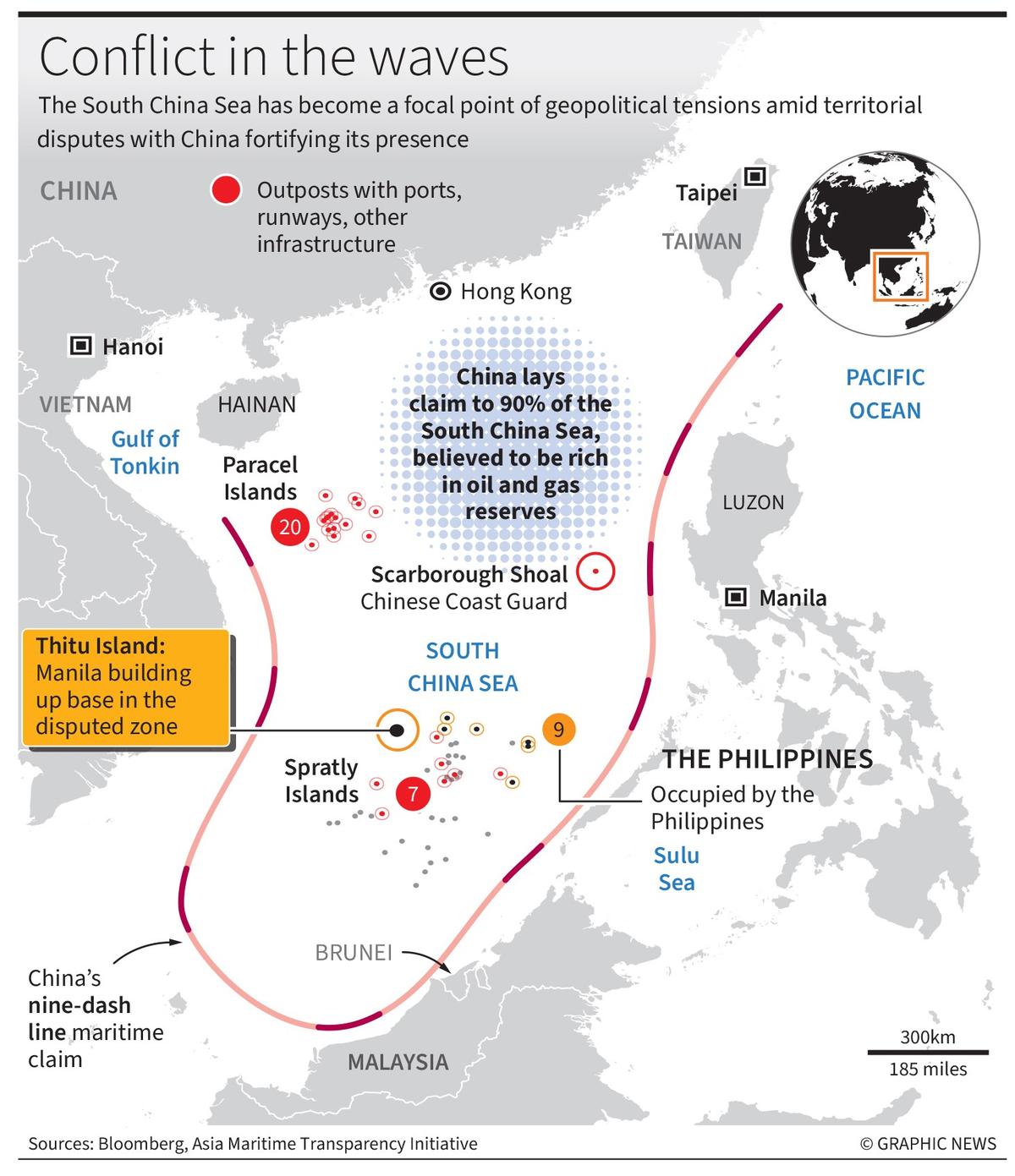
- 28 Sep 2024
In News:
In recent years, maritime East Asia has emerged as a battleground for intensified power politics, particularly in the East China Sea and the South China Sea. These regions involve complex territorial disputes and geopolitical tensions, particularly concerning China, Japan, Taiwan, and several Southeast Asian nations.
Geographic and Strategic Significance
East China Sea
- Territorial Claims: The East China Sea borders China, Taiwan, Japan, and South Korea, with the Senkaku/Diaoyu islands being a focal point of contention.
- Crises: Multiple crises have erupted over these islands, reflecting deep-seated national interests.
South China Sea
- Key Players: Located between China, Taiwan, and five Southeast Asian countries—Vietnam, Malaysia, Brunei, the Philippines, and Indonesia.
- Flashpoint: This area has become a critical flashpoint in the Indo-Pacific, with China aggressively asserting its claims.
China's Motivations
Naval Exercises and Claims
- Naval Collaboration: China has conducted naval exercises with Russia in the South China Sea, showcasing military capabilities and reinforcing territorial claims.
- Legal Standing: Despite a 2016 ruling by a permanent court of arbitration declaring China's claims to lack legal basis, Beijing has rejected this decision.
Regional Responses to China's Actions
1. Enhancing Defence Capabilities
- Increased Defence Spending: Countries like Japan and the Philippines are significantly boosting their defence budgets, with Japan aiming to double its spending by 2027.
- Acquisition of Technology: The Philippines has acquired anti-ship BrahMos missiles from India as part of its defence enhancement efforts.
2. Addressing Maritime Activities
- Shift in Policy: The Philippines has pivoted from a conciliatory approach to actively publicizing confrontations with Chinese vessels.
- Public Diplomacy: The Philippines employs social media to document and share encounters with Chinese ships, shaping public perceptions.
3. Strengthening Alliances
- U.S. Cooperation: The Philippines, Japan, and South Korea are reinforcing their defence relationships with the U.S., expanding cooperation in various domains including joint exercises.
- Trilateral Meetings: The U.S., Japan, and South Korea have deepened their trilateral cooperation, addressing concerns about unilateral changes to the status quo in the Indo-Pacific.
U.S. Credibility and Strategic Implications
Despite efforts to bolster alliances, concerns remain regarding U.S. credibility and the impact of domestic politics on its international commitments. There is ongoing debate over whether U.S. engagement balances Chinese power or exacerbates tensions.
China’s Sovereignty Perspective
National Security Framework
- Defence White Paper: China's 2019 Defence White Paper emphasizes that the South China Sea islands and Diaoyu Islands are integral parts of its territory.
- Infrastructure Development: China claims its actions are defensive, building infrastructure and conducting patrols, while regional nations view these actions as provocative.
Economic Importance of the Seas
- Maritime Trade Routes: Key maritime trade routes in East Asia traverse these waters, with the Taiwan Strait being a critical choke point.
- Resource Richness: The region contains vast reserves of untapped oil and natural gas, making it economically significant.
China's Aggressive Tactics
Infrastructure and Militarization
- Building Facilities: China is constructing military installations and artificial islands in both the East and South China Seas.
- Conflict with Japan: China has frequently contested Japanese claims, resulting in significant diplomatic and military tensions.
South China Sea Belligerence
- Power Asymmetry: China's navy is the largest in the world, enabling it to project power effectively in the South China Sea.
- Aggressive Maneuvers: Tactics include harassment of resupply missions, ramming vessels, and the use of military-grade lasers.
Recent Escalations in the South China Sea
- Increased Incidents: Since 2022, clashes between China and the Philippines have intensified, especially around Second Thomas Shoal and Sabina Shoal.
- Dangerous Encounters: China's larger Coast Guard vessels pose significant risks during confrontations, raising concerns about potential miscalculations.
Conclusion
The evolving power dynamics in maritime East Asia highlight the interplay of national interests, regional security, and international cooperation. The situation remains fluid, with significant implications for global trade, security, and diplomatic relations. Understanding these complexities is essential for addressing the challenges posed by an assertive China and fostering stability in the region.
ARMED FORCES (SPECIAL POWERS) ACT (AFSPA)
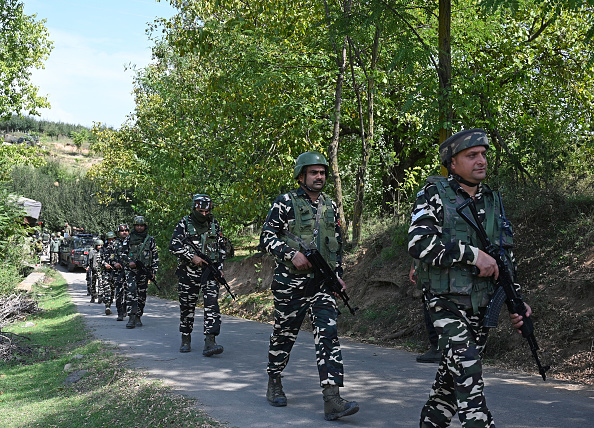
- 27 Sep 2024
In News:
The Armed Forces (Special Powers) Act (AFSPA) is a controversial law that grants extraordinary powers to the armed forces in designated "disturbed areas." Recently, the Ministry of Home Affairs extended AFSPA for six months in parts of Nagaland and Arunachal Pradesh, highlighting ongoing security concerns in these regions.
Current Status of AFSPA
Extended Areas
- Nagaland: AFSPA has been extended to eight districts—Dimapur, Niuland, Chumoukedima, Mon, Kiphire, Noklak, Phek, and Peren—along with 21 police stations in additional districts.
- Arunachal Pradesh: The Act continues in Tirap, Changlang, and Longding districts, as well as in certain areas of Namsai district.
Duration of Extension
The current extension is effective from October 1, 2024, lasting for six months unless revoked earlier. These areas were initially declared "disturbed" on April 1, 2024.
About AFSPA
Objective
AFSPA aims to maintain law and order in regions affected by insurgency or unrest, providing armed forces with necessary powers to perform their duties.
Key Provisions
- Section 3: Empowers the Governor or the Central Government to declare areas as "disturbed."
- Section 4: Grants special powers for arrests and searches without warrants.
- Section 6: Mandates that arrested individuals and seized property be handed over to the police.
- Section 7: Prosecution of armed forces personnel requires prior approval from the Central Government.
Rationale for Implementation
- To enable effective counter-insurgency operations.
- To ensure the protection of armed forces members.
- To uphold national security and sovereignty.
Criticisms and Issues
AFSPA has faced significant backlash for:
- Violating Fundamental Rights: Critics argue it undermines Articles 14, 19, and 21 of the Constitution.
- International Law Conflicts: It is perceived as contrary to the Universal Declaration of Human Rights and the International Covenant on Civil and Political Rights.
- Erosion of State Autonomy: The Act is viewed as an infringement on state powers, even in peaceful contexts.
Ineffectiveness and Atrocities
Reports of human rights abuses and the ineffectiveness of AFSPA in genuinely countering insurgency raise questions about its continued application.
Government's Position
Union Home Minister Amit Shah has noted that AFSPA has been lifted from 70% of the northeastern states, but it remains in force in certain areas, including Jammu and Kashmir, where revocation is also being considered.
Jeevan Reddy Committee
On November 19, 2004, the Central Government established a five-member committee led by Justice B.P. Jeevan Reddy to assess the Armed Forces (Special Powers) Act (AFSPA) in northeastern states. The committee was tasked with reviewing the law's implications and effectiveness.
Key Findings
In its 2005 report, the Jeevan Reddy Committee made several critical observations and recommendations:
- Complete Repeal: The committee advocated for the complete repeal of AFSPA, labeling it a "symbol of hate and oppression" and describing it as an "instrument of high-handedness."
- Incorporation into Other Legislation: It suggested that relevant provisions of AFSPA be integrated into the Unlawful Activities (Prevention) Act, 1967, with necessary modifications to delineate the powers of armed and paramilitary forces.
- Establishment of Grievance Cells: The committee recommended the creation of grievance cells in each district where armed forces are deployed, aimed at addressing public complaints and concerns regarding military actions.
Additional Recommendations
- The 5th report of the Second Administrative Reforms Commission also echoed the call for repealing AFSPA, reinforcing the need for legislative reform in addressing security issues.
- In 2016, the Supreme Court ruled that the armed forces cannot evade investigation for alleged excesses committed during their duties, even in "disturbed areas." This ruling clarified that the legal protections offered by AFSPA are not absolute, emphasizing accountability.
Conclusion
AFSPA remains a contentious issue with significant implications for civil rights, regional stability, and national security. A careful review and possible reform of the Act are essential to balance security needs with the protection of fundamental rights.
Hyperpoliticisation of Indian Higher Education
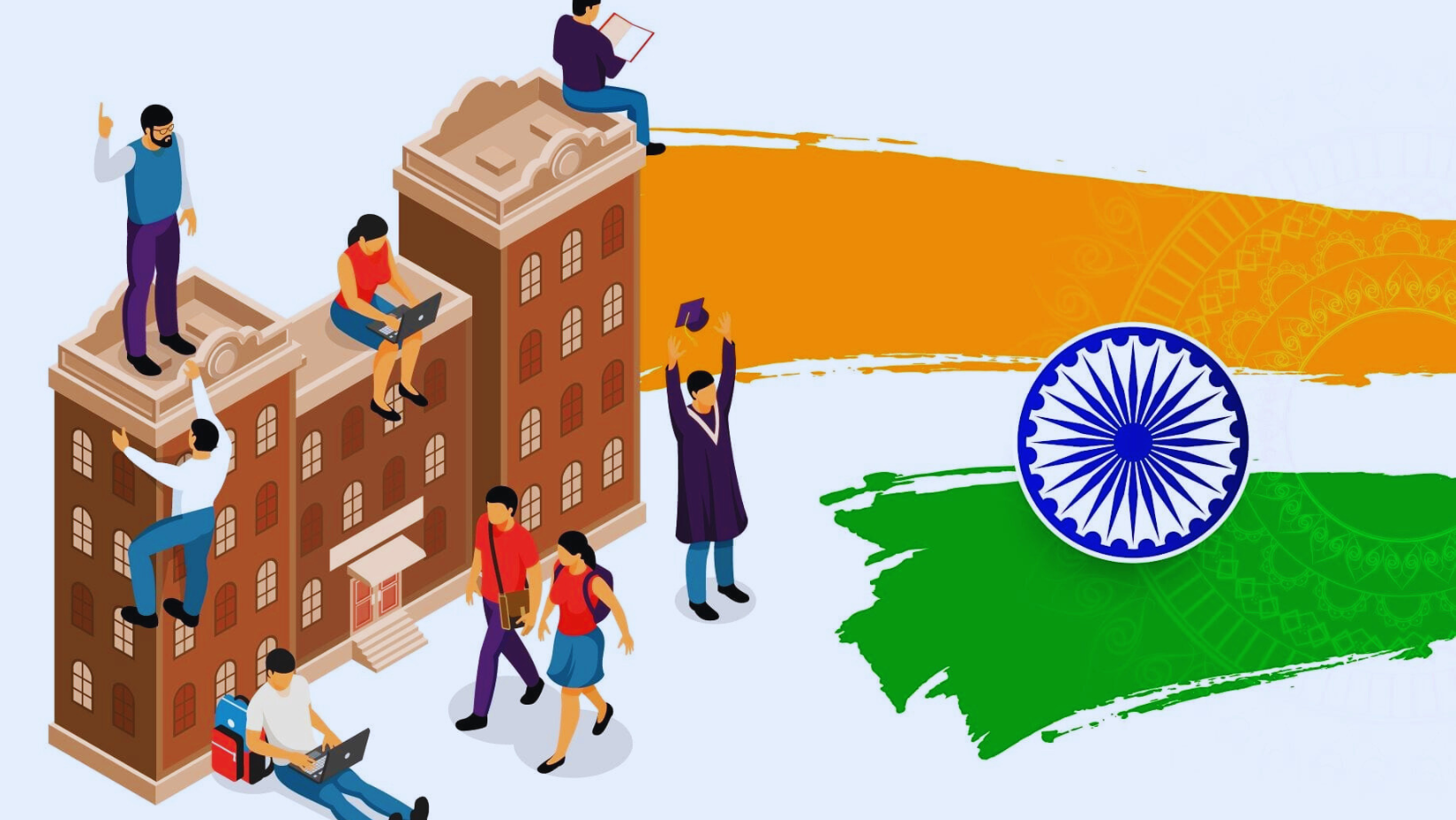
- 20 May 2024
Why is it in the News?
The hyperpoliticisation of Indian higher education is a grave threat to academic institutions, the academic profession, and intellectual life in general.
Context:
- The higher education system in India is one of the largest globally, showcasing its rich historical legacy and future ambitions.
- The country is home to an impressive range of institutions, including the globally renowned Indian Institutes of Technology (IITs) and Indian Institutes of Management (IIMs), as well as a vast network of universities and colleges.
- Notably, the QS World University Rankings for Asia 2024 highlight India as having the most represented higher education system.
- However, this expansive framework faces numerous challenges and opportunities that shape the current higher education landscape in India.
- While access has significantly expanded, concerns about quality, relevance, and the ability to prepare youth for the 21st century remain.
- Additionally, recent reports have pointed to a troubling trend of increasing politicization within Indian higher education institutions, which threatens academic freedom, intellectual discourse, and overall educational quality.
Current Status of Higher Education in India:
As per the All India Survey of Higher Education (AISHE) 2021-22, released in January 2024:
- Student Enrolment: Higher education institutes have seen a significant rise in student enrolment, reaching 4.33 crore in 2021-22 from 4.14 crore in 2020-21 and 3.42 crore in 2014-15.
- Notably, women's enrolment has surged by 32% to 2.07 crore in 2021-22 from 1.5 crore in 2014-15, with the highest proportion enrolled at the postgraduate level (55.4%).
- Gross Enrolment Ratio (GER) and Gender Parity Index (GPI): India's estimated GER for the age group 18-23 years stands at 28.4%.
- The GPI, reflecting the female GER to male GER ratio, is 1.01 at the national level, indicating gender parity.
- Discipline-wise Enrolment: At the undergraduate level, the Bachelor of Arts (BA) programme leads with 34.2% enrolment, followed by science (14.8%), commerce (13.3%), and engineering and technology (11.8%).
- Social science dominates postgraduate enrolment, with around 10.8 lakh students.
- Primacy of Government Institutions: Government universities attract 73.7% of all students, despite comprising only 58.6% of all universities.
- State public universities hold the largest share of enrolment, accounting for approximately 31% of government-owned universities.
Current Challenges in India's Higher Education System:
- Politicization and Lack of Autonomy: Concerns arise regarding the growing politicization of higher education institutions, including allegations of political interference in appointments and curriculum decisions.
- Many institutions lack autonomy in crucial areas like faculty recruitment and curriculum design, hindering innovation and adaptability.
- Inequitable Access and Low GER: Access to higher education remains unequal, with disparities based on socio-economic status, gender, and geography.
- Although India's Gross Enrolment Ratio (GER) has improved (currently 28.4%), it still falls below the global average of 36.7%.
- Limited Funding: Budget cuts in the education sector, including a 7% reduction in the Interim Budget 2024-25 and a 61% decrease in the allocation for the University Grants Commission, pose significant challenges.
- Despite rising Gross Expenditure on Research and Development (GERD), India's R&D investment as a percentage of GDP lags behind other countries.
- Shortage of Faculty and Brain Drain: There is a severe shortage of qualified faculty members in Indian higher education institutions, with over 30% of teaching positions vacant in 45 Central Universities as of 2023.
- The brain drain of talented academics to other countries or the private sector exacerbates this issue.
- Inadequate Industry-Academia Collaboration: Insufficient collaboration between higher education institutions and industries leads to a skill gap among graduates, with a significant demand-supply gap in key roles such as ML engineer and data scientist.
- Uneven Regional Development: Higher education institutions' development varies across regions and states, with states like Delhi, Tamil Nadu, and Maharashtra hosting more reputed institutions compared to northeastern and central regions, which face challenges in terms of quality and access.
How Can the Higher Education System in India Be Revamped?
- Redefine Universities' Role: Shift focus from rote learning to practical skill development through project-based learning, internships, and industry collaborations.
- Encourage universities to engage with local communities on social development projects, promoting social responsibility among students.
- Transform institutes from "Degree Issuers" to "Skill Generators."
- Open Educational Resources (OER): Enhance the National Digital Library of India and promote the development and adoption of open educational resources, like MIT OpenCourseWare, providing free access to quality educational materials.
- This approach could reduce costs, enhance access, and foster a culture of knowledge sharing.
- Entrepreneurship and Innovation Centers: Establish dedicated centres within universities, inspired by Stanford University's StartX program, offering mentorship, funding opportunities, and a supportive ecosystem for students and faculty to transform innovative ideas into successful ventures.
- Dual Study Programs: Implement phase-wise dual study programs, inspired by Germany's apprenticeship model, where students combine theoretical learning at universities with practical training in companies.
- This approach ensures industry-relevant skill development and enhances employability.
- Competency-based Credentialing and Blockchain Certificates: Implement a competency-based credentialing system that recognizes skills and competencies acquired through various learning pathways.
- Leverage blockchain technology to issue tamper-proof, verifiable digital certificates and credentials, promoting lifelong learning, skill-based education, and recognition of diverse learning experiences.
- Transnational Education Partnerships: Promote collaborations with reputed international universities for joint degrees, twinning programs, or branch campuses.
- This approach could enhance global exposure, facilitate knowledge transfer, and improve the international competitiveness of Indian higher education.
Key Government Initiatives in Higher Education:
- National Education Policy (NEP) 2020: Aims to transform the education system, focusing on multidisciplinary learning, skill development, and promoting research and innovation.
- It proposes increasing the Gross Enrollment Ratio in higher education to 50% by 2035.
- Institutions of Eminence (IoE) Scheme: Launched in 2018, this scheme selects 20 institutions to enjoy complete autonomy, aiming to improve their global rankings and enhance higher education quality.
- National Credit Framework: Designed to integrate training and skill development into the education system.
- Credits earned by students will be stored digitally in the Academic Bank of Credits, accessible via a linked Digilocker account.
- Revamped Accreditation and Ranking Systems: The National Institutional Ranking Framework (NIRF) ranks higher education institutions across categories, while the revamped National Assessment and Accreditation Council (NAAC) ensures quality standards among institutions.
- Digital Initiatives: SWAYAM, an online learning platform, offers courses from school to postgraduate levels.
- The National Digital Library of India provides access to educational resources.
- SHE under INSPIRE: The Scholarship for Higher Education (SHE) program, part of the Innovation in Science Pursuit for Inspired Research (INSPIRE) by the Department of Science and Technology (DST), supports deserving students in basic and natural sciences at undergraduate, postgraduate levels and encourages research careers through scholarships.
- Study in India Program: Launched in 2018, this program attracts international students by offering scholarships and streamlining admission processes.
- Foreign Institutions in India: The University Grants Commission's 2023 regulations allow foreign universities ranked among the world's top 500 to establish branch campuses in India.
Conclusion
India's higher education sector is undergoing significant reforms and initiatives aimed at enhancing quality, accessibility, and global competitiveness. Through policies like the National Education Policy 2020 and programs such as Institutions of Eminence, the government is prioritizing multidisciplinary learning, skill development, and research promotion. Digital initiatives like SWAYAM and the Study in India Program further contribute to modernizing and internationalizing higher education, while efforts to attract foreign institutions and scholarships underscore India's commitment to fostering innovation and excellence in education.
The Reality of the Swachh Bharat Mission
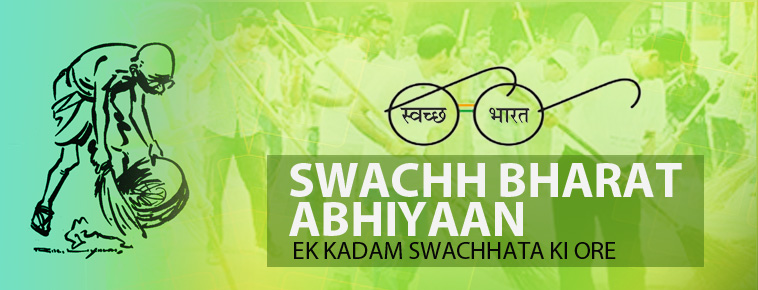
- 25 Apr 2024
Why is it in the News?
A scheme fully owned by the state has become a toolkit for privatisation of public health services and continues caste discrimination.
Context:
- India was ranked right at the bottom of 180 countries in the Environment Performance Index (EPI) in 2022.
- This index evaluates countries based on their performance in addressing climate change, maintaining environmental health, and preserving ecosystem vitality.
- It assesses 40 performance indicators across 11 issue categories, encompassing areas like air quality, access to drinking water, and sanitation.
- In response to this ranking, the government expressed reservations, citing flaws in the methodology that, according to them, fail to accurately capture the Indian scenario.
- Over the past decade, the Modi government has launched several development campaigns, including the Swachh Bharat Mission, the Atal Mission for Rejuvenation and Urban Transformation, the Pradhan Mantri Awas Yojana, and the National Clean Air Programme.
- These endeavors are geared towards enhancing living standards and addressing various socio-economic challenges.
- However, despite these efforts, there remains a noticeable rise in the population's vulnerability due to environmental issues like air and water pollution.
About Swachh Bharat Mission:
- Swachh Bharat Mission, the world’s largest sanitation initiative was launched by the Prime Minister of India in 2014 to achieve an Open Defecation Free India by October 2, 2019, as a tribute to Mahatma Gandhi.
- The programme led to the construction of over 10 crore individual household toilets, taking sanitation coverage from 39% in 2014 to 100% in 2019 when around 6 lakh villages declared themselves Open Defecation Free (ODF).
- The second phase of the mission aims to sustain the open defecation-free status and improve the management of solid and liquid waste, while also working to improve the lives of sanitation workers.
- The mission aimed at progressing toward target 6.2 of the Sustainable Development Goal Number 6 established by the United Nations in 2015.
- By achieving the lowest open defecation-free status in 2019, India achieved its Sustainable Development Goal (SDG) 6.2 health target in record time, eleven years ahead of the UN SDG target of 31 December 2030.
- The mission was split into two: rural and urban.
- In rural areas "SBM - Gramin" was financed and monitored through the Ministry of Drinking Water and Sanitation (since converted to the Department of Drinking Water and Sanitation under the Ministry of Jal Shakti) whereas "SBM - urban" was overseen by the Ministry of Housing and Urban Affairs.
- The rural division has a five-tier mechanism: central, state, district, block panchayat, and gram panchayat.
- As part of the campaign, volunteers, known as Swachhagrahis, or "Ambassadors of cleanliness", promoted the construction of toilets using a popular method called Community-Led Total Sanitation at the village level.
Critique of the Swachh Bharat Mission (SBM):
Discrepancy between Goals and Outcomes:
- The Swachh Bharat Mission (SBM) and its successor, SBM 2.0, set out ambitious objectives to achieve garbage-free cities, garnering political support across party lines.
- However, the reality on the ground paints a different picture.
- Despite government assertions of India achieving open defecation-free status, reports from the Comptroller and Auditor General in 2020 raised doubts about the program's effectiveness, highlighting issues such as substandard toilet construction and inadequate waste treatment.
- In urban areas, certain communities, particularly those residing in slums, continue to lack access to essential sanitation facilities, exacerbating existing inequalities.
- In rural and peri-urban regions, the lack of integration between toilet construction and waste management has led to environmental contamination and health hazards.
Perpetuation of Power Dynamics and Inequalities:
- Sanitation and waste management in India are deeply entrenched in caste dynamics, historically burdening marginalized communities with sanitation tasks.
- Despite attempts by SBM to promote the idea of shared responsibility, the underlying power dynamics persist.
- The introduction of capital-intensive technologies aimed at mechanizing waste management processes has not yielded the desired outcomes, resulting in health crises due to improper waste disposal practices.
- The outsourcing of sanitation work to private contractors, often employing members of marginalized communities, has further entrenched caste-based discrimination.
- Government emphasis on procuring expensive machinery for waste management, funded through public resources, has inadvertently facilitated the privatization of public health services, exacerbating existing inequalities.
Technological Solutions and Implementation Challenges:
- While the government has invested in technological solutions such as waste-to-energy plants and biological methanation, their effectiveness remains limited, with few success stories to showcase.
- Challenges persist in the implementation of these solutions, leading to a lack of tangible improvements in solid waste management across many towns and cities.
Gap in Sanitation Inspection Infrastructure:
- A significant gap in the sanitation inspection infrastructure exists within Himachal Pradesh, as revealed during a recent case in the State's High Court.
- On March 30, 2024, it was disclosed that the Shimla Municipal Corporation, consisting of 34 wards, has only five sanitation inspectors.
- Moreover, the decision to declare this cadre dead after retirement raises concerns about the State's commitment to addressing sanitation issues effectively.
- With more than 50 municipal bodies in Himachal Pradesh and only 20 sanitation inspectors available, it is clear that several municipalities lack essential sanitation inspection personnel.
The interconnectedness of Environmental Performance Index (EPI) and Development Campaigns:
- The EPI offers a comprehensive assessment of a country's environmental health and sustainability efforts.
- One critical aspect of the EPI is mapping, which exposes the shortcomings and unsustainability of current development processes.
- In light of a recent Supreme Court judgment acknowledging the links between climate change and basic human rights, it is evident that development models must be reevaluated and adjusted.
- The interconnectedness of the EPI and various development campaigns cannot be ignored, as the consequences of climate change directly impact human well-being and rights.
- With climate scientists attributing current environmental problems to anthropogenic and systemic factors, it is essential to consider the broader implications of the EPI when planning and implementing development initiatives.
Conclusion
To tackle India's environmental challenges, a comprehensive strategy prioritizing sustainability, equity, and social justice is essential. This involves reassessing development strategies, strengthening enforcement, and encouraging community participation in environmental governance. Addressing implementation issues and linking policies to human rights can improve India's EPI performance and foster a sustainable future.
India’s HIV/AIDS Response

- 01 Apr 2024
Why is it in the News?
April 1, 2004, marked a significant moment in India's fight against HIV/AIDS as Free Antiretroviral Therapy (ART) was introduced for Persons Living with HIV (PLHIV).
Context:
- April 1, 2004, stands as a landmark moment in India's approach to addressing the HIV/AIDS epidemic, as Free Antiretroviral Therapy (ART) was introduced for Persons Living with HIV (PLHIV).
- This initiative, conceived in response to the pressing issues of access and affordability, has emerged as a crucial intervention in the fight against the disease.
- As we commemorate this day, it is imperative to delve into the progression and significance of India's free ART program, shedding light on its transformative impact on the nation's response to the HIV/AIDS crisis.
HIV/AIDS's Emergence and Initial Challenges:
- Inception of a Global Health Crisis: The emergence of HIV/AIDS in the early 1980s signaled the onset of a widespread health emergency with profound implications for populations worldwide.
- Originally detected among groups in the United States, the disease swiftly traversed borders, reaching nations like India and beyond.
- This era was characterized by uncertainty, anxiety, and a lack of comprehension regarding the novel virus, initially dubbed GRID (Gay-Related Immune Deficiency), later renamed HIV (Human Immunodeficiency Virus) and its associated illness AIDS (Acquired Immunodeficiency Syndrome).
- Absence of Effective Treatments Resulting in Dire Consequences: During the initial stages of the epidemic, HIV/AIDS was synonymous with a dire prognosis, largely due to the absence of viable treatment options.
- Marginalized communities, including men who have sex with men, intravenous drug users, and commercial sex workers, bore the brunt of the disease's impact.
- However, as time progressed, it became evident that HIV/AIDS transcended boundaries of gender, sexual orientation, and socioeconomic status, affecting individuals from diverse backgrounds.
- Pervasive Social Stigma: In addition to its grave health implications, HIV/AIDS precipitated significant social stigma and discrimination.
- Individuals living with HIV/AIDS encountered marginalization, employment loss, and social exclusion from both their communities and families.
- This pervasive stigma compounded the challenges associated with managing HIV/AIDS and impeded effective epidemic control efforts.
- Limited Treatment Accessibility and Exorbitant Costs of Available ART: Despite the escalating recognition of HIV/AIDS as a global health threat, access to treatment remained scant, particularly in low- and middle-income nations such as India.
- The approval of the first antiretroviral drug, AZT (zidovudine), by the US Food and Drug Administration (US FDA) in March 1987 marked a significant milestone.
- HAART (Highly Active Antiretroviral Therapy) represented a breakthrough in disease management, combining multiple antiretroviral drugs to suppress viral replication and bolster immune response.
- However, the exorbitant expenses associated with HAART, reaching up to $10,000 annually per patient, rendered it inaccessible to the majority of individuals living with HIV/AIDS, especially those residing in resource-constrained settings.
The Introduction of Free ART in India and its Impact:
- In response to the pressing issues of limited access and affordability of HIV/AIDS treatment, the Indian government embarked on a significant initiative.
- On April 1, 2004, the government initiated the provision of Free Antiretroviral Therapy (ART) for Persons Living with HIV (PLHIV).
- The introduction of Free ART aimed to dismantle barriers to treatment and extend life-saving medication to all PLHIV, irrespective of their financial means.
- By offering ART at no cost, the government endeavored to ensure that access to treatment would not be hindered by financial constraints, thereby addressing a crucial gap in healthcare accessibility.
Its Role in Curbing the Epidemic
- Enhanced Treatment Accessibility: Over the past two decades, the initiative has undergone substantial expansion, witnessing a surge in the number of ART centers from less than 10 to approximately 700, catering to around 1.8 million PLHIV.
- This proliferation has facilitated heightened treatment access for individuals living with HIV/AIDS nationwide, including those residing in remote and underserved regions.
- A notable outcome of the Free ART endeavor has been the remarkable enhancement in health outcomes observed among PLHIV.
- Significant Reduction in Mortality Risk and Transmission Rates: Timely and effective treatment accessibility has transfigured HIV/AIDS from a dire prognosis to a manageable chronic ailment for many.
- By suppressing viral load and bolstering immune response, ART has not only extended the lifespan of PLHIV but also augmented their quality of life.
- Moreover, the Free ART initiative has played a pivotal role in curbing HIV transmission rates by ensuring treatment access for PLHIV, thereby thwarting virus dissemination within communities.
- Research indicates that efficacious ART can substantially mitigate HIV transmission risk, contributing to the overall decline in HIV prevalence.
- Broader Societal Benefits: Beyond its direct impact on individuals grappling with HIV/AIDS, the Free ART initiative has yielded wider societal advantages.
- By mitigating the disease burden and forestalling fresh infections, the initiative has alleviated the societal and economic repercussions of HIV/AIDS on families, communities, and healthcare systems.
- Supplementary Measures and Patient-Centric Approach: The success of India's ART program extends beyond free medication provision.
- Complementary initiatives, such as complimentary diagnostic services, prevention of parent-to-child transmission programs, and management of opportunistic infections, have played pivotal roles in curbing the HIV epidemic.
- Furthermore, the program has adopted a patient-centric strategy, furnishing stable PLHIV with two to three months' worth of medicines to minimize clinic visits and enhance treatment adherence.
Challenges and Future Prospects:
- Delayed Initiation and Attrition in Care: A notable portion of patients presents with advanced HIV illness, evidenced by low CD4 counts, impacting treatment efficacy.
- Furthermore, attrition in care remains a concern, as some patients discontinue treatment upon feeling well, leading to interruptions and potential drug resistance development.
- Logistical Hurdles and Infrastructure Deficiencies: Remote and underserved regions, including those with rugged terrain, encounter hurdles in accessing vital medications and healthcare provisions.
- Fortifying the logistical network and infrastructure for dispensing ART drugs is imperative to sustain uninterrupted treatment access for all PLHIV.
- Involvement of the Private Sector: While the public sector assumes a pivotal role in HIV/AIDS treatment provision, fostering collaboration with the private sector is crucial.
- Leveraging the resources and infrastructure of private healthcare entities can expand ART accessibility and reach marginalized populations, including urban dwellers.
- Interconnected Health Program Integration: Augmenting integration with other health initiatives, encompassing hepatitis, non-communicable ailments, and mental health, holds paramount importance.
- Given PLHIV's propensity for concurrent ailments, comprehensive and integrated healthcare services necessitate intersectoral collaboration within the healthcare spectrum.
- Realization of Ambitious NACP Phase 5 Objectives: The ongoing fifth phase of the National AIDS Control Programme (NACP) sets forth ambitious targets, envisaging an 80% reduction in annual new HIV infections and AIDS-related mortalities by 2025.
- Achieving these milestones demands concerted endeavors to escalate testing, enhance treatment coverage, and secure viral suppression among PLHIV.
Conclusion
India's free ART initiative has successfully combated HIV/AIDS, demonstrating the power of accessible healthcare. Its achievements emphasize the importance of political will, funding, community engagement, and patient-centered care in tackling infectious diseases. Lessons from this program will guide future public health endeavors, improving outcomes for all
